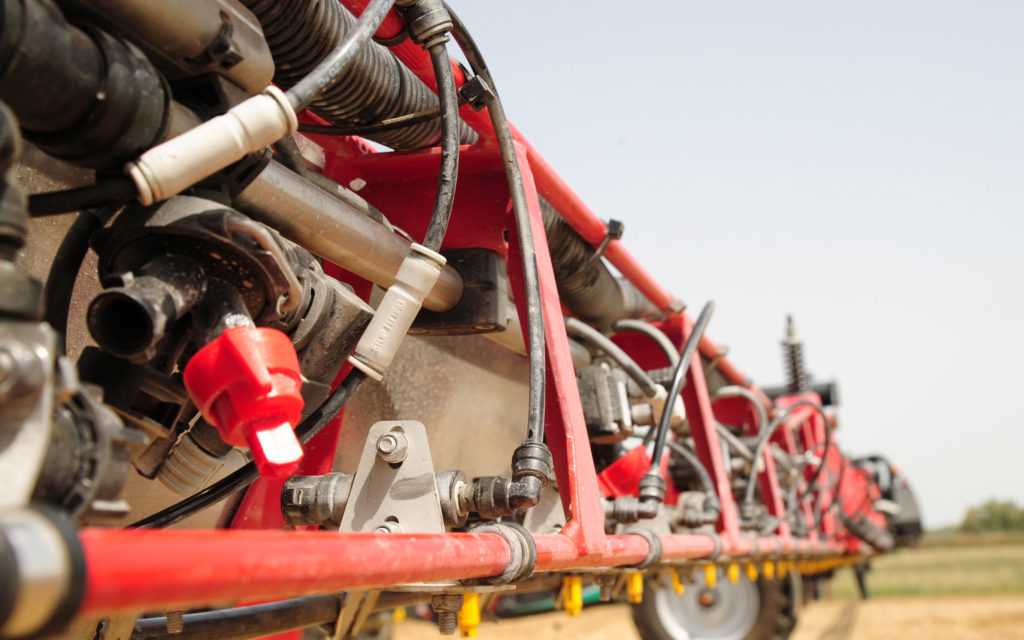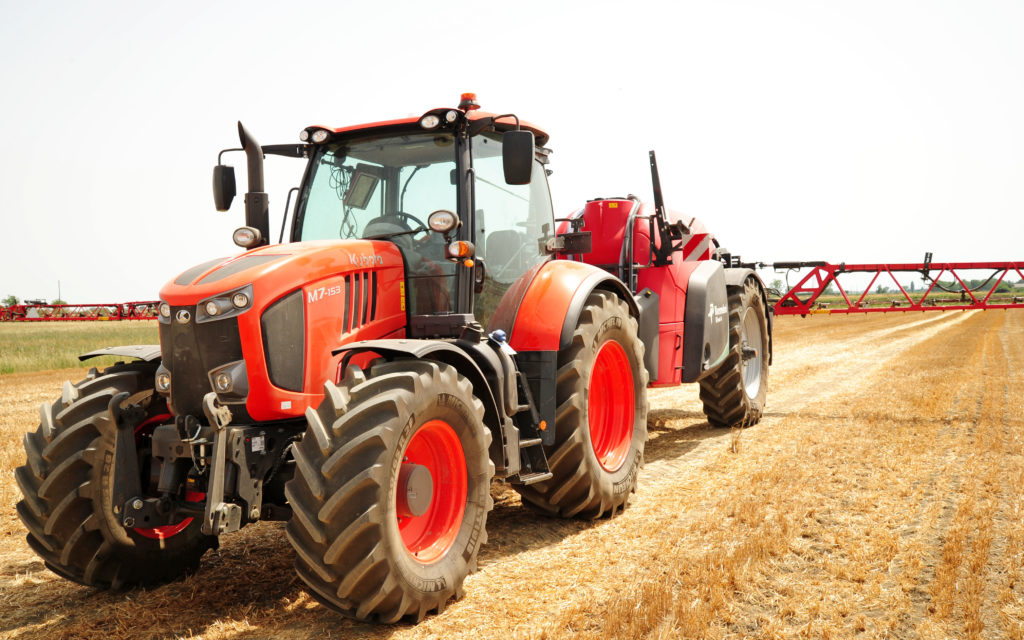The latest update to Kverneland’s iXTrack T series sprayers includes several new options from nozzle spacing and spot spraying to boom height control.
A major advance is that a new 36/25m steel boom can be specified which allows contractors to switch between the two working widths without having to unfold the whole boom.
Lower boom height
Other new features highlighted by the company include the choice of an extra spray line with 25cm nozzle spacing.
With the nozzles being closer, the distance between the crop canopy and boom height is decreased, while ensuring an even coverage, thus reducing spray drift.

Also available is the Boom Guide ProActive automatic boom height control system which corrects the boom height via ultrasonic sensors which control the sprayer hydraulics.
The company notes that it is able to provide boom guidance in any field conditions, even at higher speeds.
Patchy emergence
A hybrid mode can be selected which not only measures the distance to the plant, it also measures the distance to the soil, thus setting the boom at an optimal average height where crop emergence may be uneven or poorly established.
Although the nozzle spacing is halved, the boom height is only reduced to 30cm from 50cm as allowance needs to be made for the gap left at the top of the fan pattern.
The cleaning and rinsing system has also been updated with some new items that increase safety and hygiene.
SpotSpray addition
Kverneland also suggest that its new SpotSpray application that comes as part of the iX’s electronics can also have a large impact on total chemical use.

To many, spot spraying involves the identification of individual weeds and their elimination one at a time using some form of sensor or camera to recognise them.
However, the company points out that this means the farmer has to estimate just how much chemical will be required for a particular area, running the risk of there being too little, necessitating a return to base for a refill, or there being too much, and so chemical is not used and the surplus has to be disposed of somehow.
Mapping the problem
With the use of prescription maps, Kverneland claims that the guesswork is taken out of deciding upon spray volumes before the tank is mixed.
The company believes that prescription maps have huge potential in the management of farms and it is looking to integrate sprayer operations into the overall picture.
This ambition certainly forms a logical extension to precision farming, and the adoption of such an holistic approach, via digital technology, may well come to be seen as a huge advance in agriculture.
Useful addition to the toolbox
However, at present, the areas selected for treatment rely on visual assessment rather than a determinative and quantifiable method; this does introduce a degree of ambiguity into a system that strives for precision through measurement.

This does not mean to say that it is redundant, far from it. The tool will no doubt become used as experience of applying digital technology mounts, and it is also very likely that weed recognition via camera or drone will eventually be fed into farm management software and so make its way onto sprayer prescription maps.
From that perspective the spot spraying ability of the new iX sprayers should be seen as an enhancement of their variable rate application capabilities rather than a new stand alone tool, although that will probably come with time.

